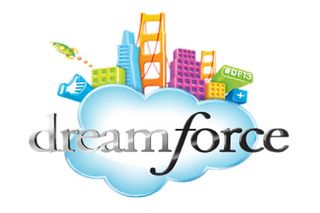Yahoo CEO: Keep it simple when it comes to design
Marissa Mayer advises firms to avoid design complexity but to also ensure design is at the heart of everything it does.

Companies must ensure they balance aesthetic needs with the desires of users to develop products that are both delightful to use and functional.
It's about recognising that the two per cent of users who want to be different are important, but that your core user base will be the other 98 per cent, according to Marissa Mayer, CEO and president of Yahoo!.
Mayer made her comments during a discussion with Salesforce CEO Marc Benioff at the company's annual user conference, Dreamforce, in San Francisco this week.
She spends quite a lot of time out in the field with product managers around the world, getting a feel for how different countries and cultures interact with technology.
"In our world, in digital, it's all about designing for global. And it's really hard to design for global if you haven't been there. If you haven't seen how people use their phone in Israel, or how they use their laptop in China or Japan [it doesn't work]. Asking people to design for the whole world is pretty daunting. So I travel with [product managers] and they learn and I learn. We'll try and understand what the pulse, the vibe of digital is in that country," she said.
"For me, it's all about the user. You have to be a user of your product to really understand what works for people, what doesn't work for people - what frustrates, what takes too long and when different options get in the way. You should build products that are really fast to learn so that in a matter of days to weeks you can be an expert. You can trade sophistication off for simplicity. If it becomes too sophisticated it ends up turning users off."
If there are 10 options, you might get a user who says 'I have no idea what I need to do this doesn't make any sense to me' Mayer warned.
Get the ITPro. daily newsletter
Receive our latest news, industry updates, featured resources and more. Sign up today to receive our FREE report on AI cyber crime & security - newly updated for 2024.
"It's about helping to design for the most common use case and making that really fast. I think about Xerox copy machines. They can do really fancy things they can staple they can collate. But the truth is, if you just press the giant green button, the right things just happen," Mayer added.
"On every product there is that green button and that's the 98 per cent use case. You want it to be an amazing experience, a delightful experience, a really simple and fluid experience."
In a nod to the wider industry trend of shiny, exciting tools and technologies with no real substance, Mayer acknowledged how far things have come.
"Design a lot of times used to be an afterthought. [It was a case of] Get the product working and then make it look pretty, whereas now it's not just about the visual design. It's about the interaction design and how you actually make the path through the product. Design has come a long way and will go even further in the next decade," she added.
Mayer stressed that Yahoo! has an incredibly talented design team who have refreshed the majority of products in the last year or so.
She also acknowledged part of her role as leader is to help the team achieve its goal and remove any obstacles in their way.
"While I don't to design the products I do get to design the organisation. I get to design the strategy. I get to design how it feels to be an employee at Yahoo! Or how it feels to be a user. It's one of the most interesting and complicated problems I've worked on," Mayer said.
Benioff referenced the likes of Steve Jobs as iconic leaders who have put design first, but, despite stressing the importance of design, Mayer stressed that Yahoo! is actually a company that puts mobile, rather than design in the spotlight.
"I do think companies can fall too in love with design," she said, before giving an example of a friend who worked for a start-up that felt the pop of the dot com bubble bursting.
All employees had to create a whitepaper detailing their role in the 'failure' and Mayer's friend called his 'Usable versus useful.' His remit was to create something to spec but he tried to stress that, at its core, you needed something people actually want to use, Mayer said.
"We don't think of ourselves as design-first, we think of ourselves as mobile-first. It's a wave large enough you can ride it to reinvention," Mayer said.
Maggie has been a journalist since 1999, starting her career as an editorial assistant on then-weekly magazine Computing, before working her way up to senior reporter level. In 2006, just weeks before ITPro was launched, Maggie joined Dennis Publishing as a reporter. Having worked her way up to editor of ITPro, she was appointed group editor of CloudPro and ITPro in April 2012. She became the editorial director and took responsibility for ChannelPro, in 2016.
Her areas of particular interest, aside from cloud, include management and C-level issues, the business value of technology, green and environmental issues and careers to name but a few.





